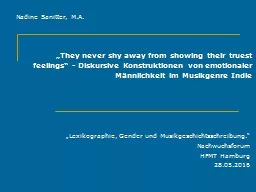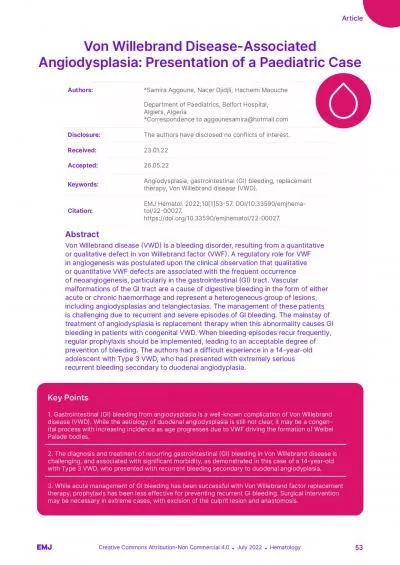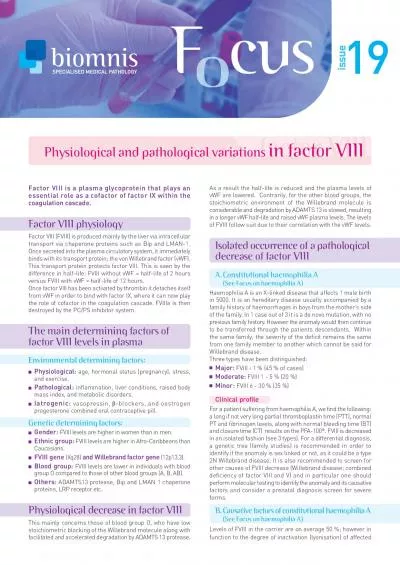PDF-Von Willebrand Disease Diagnosis TreatmentCraig Kessler MDTitle T
Author : edolie | Published Date : 2022-09-01
1 In any case I want to thank Stago for their kind invitation to speak to you today about von Willebrand disease And I hope that over the next hour or so I146ll
Presentation Embed Code
Download Presentation
Download Presentation The PPT/PDF document "Von Willebrand Disease Diagnosis Treatm..." is the property of its rightful owner. Permission is granted to download and print the materials on this website for personal, non-commercial use only, and to display it on your personal computer provided you do not modify the materials and that you retain all copyright notices contained in the materials. By downloading content from our website, you accept the terms of this agreement.
Von Willebrand Disease Diagnosis TreatmentCraig Kessler MDTitle T: Transcript
Download Rules Of Document
"Von Willebrand Disease Diagnosis TreatmentCraig Kessler MDTitle T"The content belongs to its owner. You may download and print it for personal use, without modification, and keep all copyright notices. By downloading, you agree to these terms.
Related Documents














